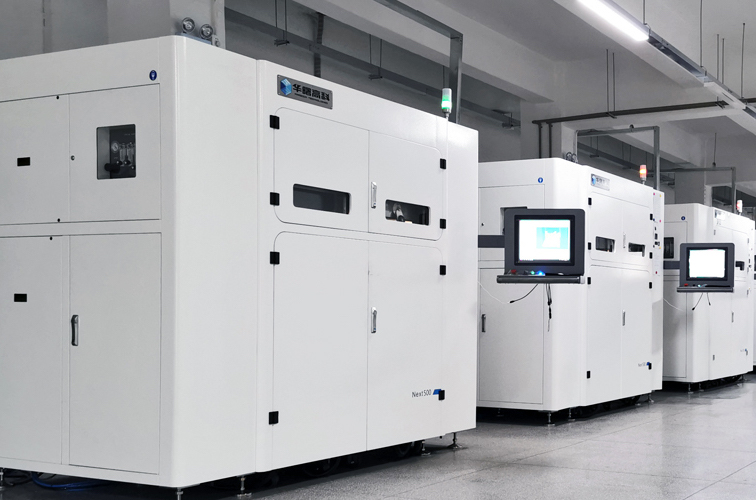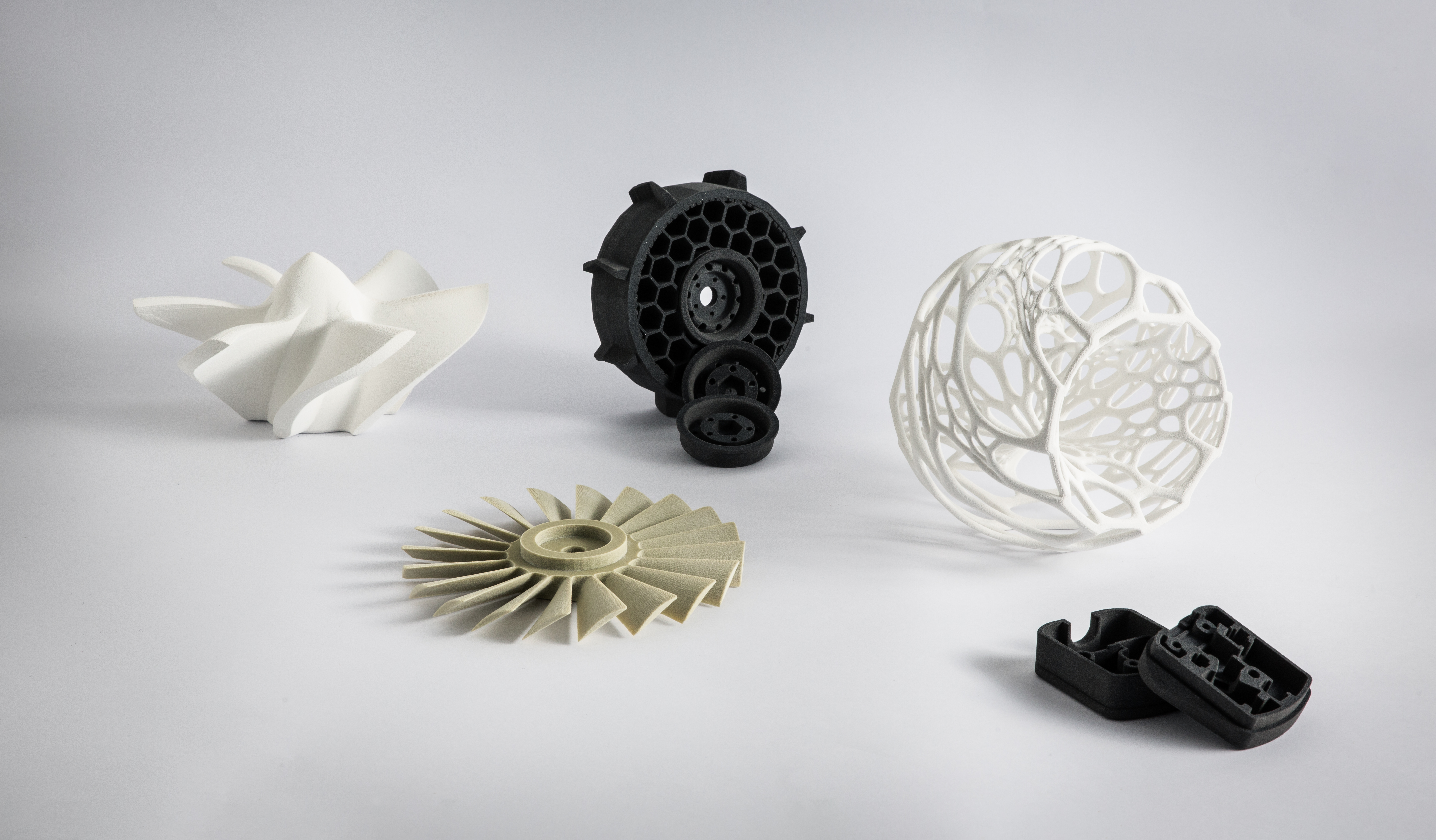Chinese 3D printer manufacturer Farsoon has launched a new polymer Powder Management System (PMS) and External Cooling (EC) Station for its 403P system, at the Formnext Connect trade show.
Working alongside the WeNext service bureau, Farsoon has designed its post-processing units with a focus on key client needs such as speed, powder management, efficiency and ease of use. The company has also announced a partnership with TIGER Coatings, in which the firms have co-developed a new 3D printing material called TIGITAL 3D-Set 371.
TIGER tested its powder using Farsoon’s ST252P systems earlier this year, and the polymer exhibited mechanical qualities that could lend it applications in the aerospace or automotive sectors. According to the Managing Director of Farsoon Europe Dr. Dirk Simon, the collaboration has yielded a new material that addresses a previously unmet client need.
“We have had many meetings with industrial partners requesting part properties for functional applications, often this includes fire resistance while keeping elastic properties high.” explained Simon. “We are so delighted to collaborate with TIGER, it has tremendous formulation know-how for achieving brilliant solutions for serving functional applications.”

Farsoon’s PMS post-processing system
With its new post-processing units, Farsoon aims to provide its customers with a more advanced and streamlined industrial 3D printing workflow. In order to develop and optimize the machines, the company partnered with WeNext, in a program that saw it install eleven 403P and Flight-403P plastic lasering systems.
WeNext opted to co-develop the machines to overcome the “pain points” of plastic 3D printing such as productivity, accessibility and efficiency, and to gain an edge in a crowded market. “As one of the early adopters of industrial plastic 3D printing technology in China, we are now faced with the increasing competition,” said Andy Zhang, Co-founder of WeNext.
“We are exploring all possibilities of improving our machine up-time and production capabilities, to offer our customers high quality, repeatable parts at an economic cost” added Zhang. “Now we are well on the way thanks to Farsoon.”
“A truly industrial workflow is the key to fully unlock the potential of large-scale additive manufacturing.”
Farsoon’s PMS system integrates used powder recycling and storage, new powder supply and high-speed mixing and sieving into one unit. The PMS machine had a powder refresh rate of just 20 percent during testing, which means that users need to top-up less often, improving their overall cost-per-part.
With a fully-sealed and automated powder-handling process, the PMS also provides users with a clean and safe production environment, and its UI enables them to control a range of parameters. For instance, the device’s mixing ratio, time and velocity, as well as its measuring accuracy, can all be customized by the client to meet their specific needs.
The PMS system is also compatible with Farsoon’s wider product ecosystem, and pairing it with a Powder Delivery Unit (PDU), allows the prepared powder to be transported directly to the printer. Given the large capacity of the PMS, it’s capable of serving multiple printers too, enabling users to achieve the maximum possible production throughput.

A new EC Station for the 403P 3D printer
Developed alongside its PMS machine, Farsoon’s EC Station is designed to offer efficient cooling, and gain the maximum product yield from its 403P series of 3D printers. Like all powder bed systems, the 403P needs time to cool off after completing a build, in order to guarantee that it continues to deliver parts of the same quality during a print run.
Usually, the cooling down process takes place internally which slows down production, but now Farsoon has optimized the process with its EC Station. The firm’s new EC system provides cooling via a controlled inert gas atmosphere, that lowers the temperature of the powder cake evenly, removing any lengthy delays between prints.
Farsoon has stated that during its pilot program, using the EC Station yielded parts with an optimal surface finish, color and size accuracy. It was also found in testing, that the cooling process could be optimized further by closely controlling the consumption of Nitrogen to suit the needs of the component’s end-use application.

Co-developing TIGER’s flame-retardant powder
In a separate collaboration, Farsoon worked with material producer TIGER coatings to develop its new TIGITAL 3D-Set 371 3D printing polymer. TIGER had initially agreed to work on the product with Japanese imaging and electronics firm Ricoh, but to test the material effectively, it turned to Farsoon and its HT252P systems.
Using the HT252P, which features a rapid scanning speed, the companies were able to accelerate the material’s development, and create product batches in less than six hours. Similarly, the printer’s 250×250 mm platform size and “parameter-editor,” allowed TIGER to produce parts efficiently, and customize its settings during the prototype testing phase.
The powder’s main feature is its flame retardancy, which is important within certain functional applications, and Farsoon says that the material displays “extraordinary” thermal and mechanical performance. With high levels of electronic isolation, dimensional stability, and chemical resistance as well, the polymer could have applications in either the electronics or transportation industries.
TIGITAL 3D-Set 371 is also characterized by low printing temperatures, which makes it more eco-friendly, and it yielded parts during testing that proved to be functional and of a high-quality. Although the new material hasn’t been launched just yet, TIGER plans to introduce it to the market by the end of November 2020.
To stay up to date with the latest 3D printing news, don’t forget to subscribe to the 3D Printing Industry newsletter or follow us on Twitter or liking our page on Facebook.
Are you looking for a job in the additive manufacturing industry? Visit 3D Printing Jobs for a selection of roles in the industry.
Featured image shows the Farsoon 403P systems that have been installed at WeNext’s 3D printing facility. Photo via Farsoon.



